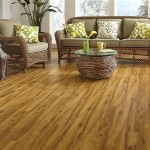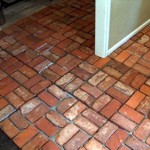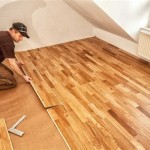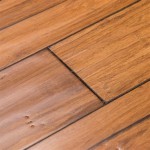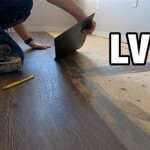Do You Put Underlay Under Wood Flooring?
When installing wood flooring, the question of whether or not to use an underlay often arises. An underlay is a thin layer of material placed between the subfloor and the wood flooring. It serves several important purposes, including:
- Moisture resistance: Underlays can help prevent moisture from seeping into the wood floor from the subfloor, which can cause damage and warping.
- Sound reduction: Underlays can muffle the sound of footsteps and other noises, creating a quieter and more comfortable living environment.
- Thermal insulation: Underlays can provide some thermal insulation, helping to keep your home warmer in the winter and cooler in the summer.
- Leveling: Underlays can help level out uneven subfloors, providing a more stable and durable base for the wood flooring.
While underlays offer numerous benefits, there are a few factors to consider before deciding whether or not to use one:
- Type of wood flooring: Engineered wood flooring is typically more stable and less prone to moisture damage than solid wood flooring. Therefore, it may not require an underlay as much.
- Subfloor condition: If your subfloor is in good condition, level, and dry, you may not need an underlay.
- Cost: Underlays can add to the overall cost of your flooring installation.
If you decide to use an underlay, there are several types to choose from, including:
- Foam underlays: Foam underlays are made from polyurethane or polyethylene foam. They are lightweight and provide good moisture and sound reduction.
- Cork underlays: Cork underlays are made from ground cork. They are moisture-resistant, thermally insulating, and provide good sound absorption.
- Rubber underlays: Rubber underlays are made from recycled rubber. They are very durable, moisture-resistant, and provide excellent sound reduction.
When choosing an underlay, consider the specific needs of your flooring and subfloor. If you have any questions or concerns, it is best to consult with a professional flooring installer.
In conclusion, using an underlay under wood flooring can provide several benefits, including moisture resistance, sound reduction, thermal insulation, and leveling. However, it is important to consider the type of wood flooring, subfloor condition, and cost before making a decision. By selecting the right underlay and having it professionally installed, you can enhance the performance and longevity of your wood flooring.

Flooring 101 Best Underlayment For Hardwood Floors Next Day

Underlayment Buyer S Guide

Hardwood Floor Underlayment Ultimate Guide

Wood Flooring Over Underlay Unique Bespoke

Hardwood Floor Underlayment Options From The Forest Llc

Underlay For Wood Laminate And Other Hard Flooring Direct

How To Choose Laminate Flooring Underlay Tile Merchant

Underlayment What It Is And Why You Need Stuga

The Advantages Of Poly Foam Underlay Blog Floorsave

Do I Need Flooring Underlayment How To Decide Which Jona Panel S Inc

